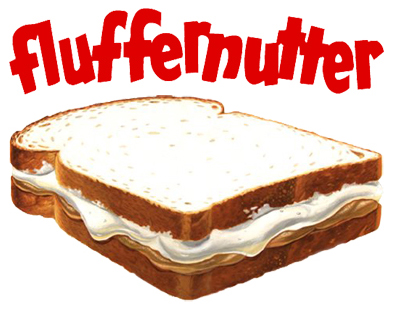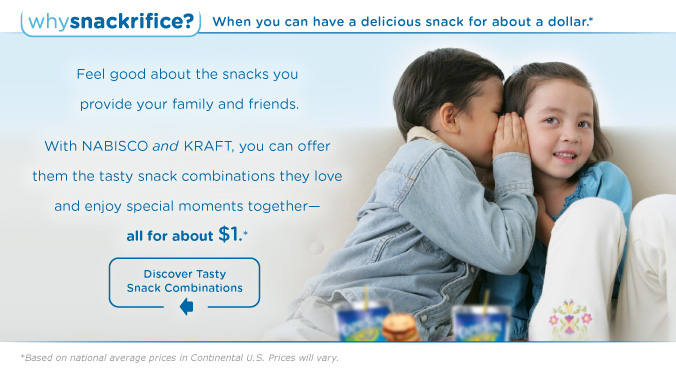Makeover for the King

......................................................................................................................................................................
Recently, the fast-food chain restaurant Burger King has decided to undergo a restaurant makeover with a new store design called "20/20". This high priced renovation project was first unveiled at the Amsterdam Schiphol Airport location on October 7th, 2009. CEO John Chidsey had this to say about the recent changes; "As we continue to grow and strengthen the brand worldwide, this new restaurant design exemplifies our vision for the brand's future and reinforces our goal of delivering superior products and positive guest experiences." Burger King's recent sales have fallen well below top competitors McDonald's and Wendy's; the store re-design is a "top-tier global brand initiative" to increase Burger King's global reputation and boost sales.
How synonymous are the phrases, 'fast-food restaurant' and 'intimate dining experience'? According to an AP Report, this remodeling project will come with a heavy bill, approximately $300,000 to $600,000 per restaurant. Some consumers are worried that this may not be the best use of money for the franchise. Is Burger King trying to become something that it's not? How successful will this intimate dining experience be for the burger chain?
Burger King is well aware that their brand needs to make some changes in order to keep up with other fast-food chains in the market, but is this the right approach?
View the full article on Ad Age.
Contributed by: Carrie Friedrich
PB & Fluff

As a self-proclaimed foodie, I'm excited to announce today is National Fluffernutter Day! Health nuts take heed: this fun-to-say day celebrates the unlikely fusion of the marshmallow brand Fluff with peanut butter (brand of choice), typically served on white bread.
According to Wikipedia, "Fluffernutter" is a registered trademark of Durkee-Mower Inc., the maker of "Marshmallow Fluff" brand marshmallow creme. However, Durkee-Mower's US trademark registrations for Fluffernutter cover only ice cream and printed recipes. In 2006, Durkee-Mower sued Williams-Sonoma Inc. in the United States District Court for the District of Massachusetts, alleging that Williams-Sonoma was selling a marshmallow and peanut butter chocolate-covered candy under the "Fluffernutter" name."
This unique combination was recently nominated as the state sandwich of Massachusetts. If Massachusetts gives the honor to the Fluffernutter, it will become the only state with a sweet official sandwich.
Brand Your Bugs
As consumers are looking for more natural solutions to implement within their lives and specifically within their healthcare choices, probiotics are emerging as a hot new trend. Probiotics (translated as "for life") refers to the "good" bacteria that are included in dietary supplements or food products.
This "good" bacteria found in our adult bodies has been shown to assist with digestion, produce vitamins, regulate the immune system, and help the body stave off the "bad" bacteria. The dominant population consists of strict anaerobic bacteria: Bacteroides, Bifidobacterium, Eubacterium and Peptostreptoccocus.
Consumer companies are getting into the bug business by branding and marketing specific strains of this good bacteria as an ingredient brand in their yogurts, juices and supplements.
Take a look at some current offerings:
- Align has a new presence in the media by touting its "Bifantis," which is a neologism that truncates the scientific name of the bacteria: Bifidobacterium infantis 35624.
- Activia has been on the market for several years and recently utilized Jamie Lee Curtis as the "Activia Lady." Their primary ingredient is "Bifidus Regularis" from the Bifidobacterium animalis DN-173 010 strain.
- NakedJuice bypasses the direct reference to bacteria altogether and uses simply "Probiotics" on this product within their lineup. It's interesting that they refer to probiotics as the "friendly, live active cultures."
- Attune Foods offers two probiotics bars, and takes it a step further by reinforcing the idea of a daily nutritional value with "daily probiotics."
- Bio-K+ utilizes a strictly scientific approach, through both their core brand name and the product names. CL1285, available in capsule, fermented milk, and dairy free forms, is a bacterial probiotic culture containing the unique and patented formula of L. acidophilus and L. casei.
- Finally, check out GoodBelly Yogurt & Juice. These products use the mark "Lp299v," which refers to Lactobacillus plantarum 299v. No emotional benefits present in this ingredient name; the company uses their core brand to communicate the end result of the product.
What do you think? Does branding bacteria with an emotional name versus a scientific one make you more inclined to try a probiotic product?
"Snackrifice"

Thought Subway's new "Fauxbesity" lingo sounded strange? Check out another coined word that is gracing the pages of our magazine advertisements. In response to looming economic concerns, Kraft has teamed up with other snack food vendors to put the hungry tummy at ease. These powerhouse snack sellers have created a line of combination snacks in order to satisfy your cravings without leaving a huge dent in your wallet. While advertising these products, Kraft has used the increasingly popular tactic of coining a brand new word in order to define a common scenario facing many consumers today. Thus, the introduction of a "snackrifice" (www.whysnackrifice.com).
Kraft's introduction of "tasty snack combinations" begs this question of consumers: "why snackrifice?" They want to know why you would give up snack time when "you can have a delicious snack for about a dollar." These and many other companies are very aware of how consumers are consciously cutting back on going out to eat and spending money on unnecessary products. They have planned marketing campaigns that highlight the benefits and convenience of packaged goods, and demonstrate how snacks can still fit into your budget. The Kraft Snackrifice campaign, and many others, have appealed to consumers by promising more bang for your buck.
Snack on.
Contributed by Carrie Friedrich
Fauxbesity

......................................................................................................................................................................
Even dictionary.com is becoming outdated. With our new fast paced, technologically inclined society, it seems like we don't even have time to blink before it's time to update again. In order to "keep up with the times" many companies are introducing their own novelities. For fear of sounding cliche, some companies have opted to simply create new words in order to differentiate themselves. Millions of products and services clutter our marketplace, so how do we stand out? Ingenuity. Marketers and Advertisers today want to tell you something different, something that you don't already know. So they are going to coin a new phrase or define a new word to do it. That is sure to grab consumer attention...right?
Fauxbesity, a new word splashed across the pages of magazine advertisements, utterly baffles dictionary.com and my trusty old Merriam-Webster pocket dictionary. Perusing through Martha Stewart Living Magazine, this fancy little word jumped off the page, begging me to read on. Well done Subway, you caught my eye!
Subway defines Fauxbesity as a noun meaning the "half-hearted claims other fast food chains make about helping kids eat better." It seems that so many companies have tried to say the same thing in an innumerable amount of different ways. Enough is enough, there are only so many different variations available to be fought over. So Subway decided to leave the clutter behind and reinvent the health food arena with this catchy little new word.
In my personal opinion, I think this innovative word creation is a great idea for market differentiation. Let's face it, we are always growing and expanding, looking for bigger and better ways to stand out. Why not spice things up a bit? If it works, and people connect with your new "creation," I say go for it! Carry on fauxbesity!
Contributed by Carrie Friedrich
Fruit Naturals … duh

......................................................................................................................................................................
And now, all the way from Del Monte Foods, a type of fruit that “likes to take it all off..,” ready-to-enjoy, and available in seven tempting varieties, introducing … FRUIT NATURALS!
(crickets.)
Unfortunately for Del Monte, the excitement surrounding their new Fruit Naturals Brand has been squelched by the redundancy that begs consumers to consider if they have ever eaten fruit that is unnatural. While the simplicity and straightforward nature of the brand is appreciated by busy consumers, this brand name seems to have fallen a little bit short in the department of innovation and received a gold star for redundancy. The intent of the name, I believe, is to highlight the convenient, ready-to-eat quality of the product. The fruit cup allows you to bypass the peeling and slicing and simply enjoy the natural fruit right away. It is my hope that all fruit consumed, whether canned, jarred, dried, or fresh is and will remain natural … despite new product extensions boasting au natural fruit.
Contributed by Carrie Friedrich
Milk Chocolate Monkeys

......................................................................................................................................................................
Flipping through the pages of Martha Stewart’s Living, a print advertisement caught my eye. Endangered Species. What comes to mind? Forest Frogs, Western Gray Whales, Grevy’s Zebras, Tazmanian Devils, and Purple Marsh Crabs. But this creative little title has proven me wrong … a chocolate brand. I don’t know about you, but I generally like to know what I’m getting myself into when it comes to my chocolate, and this threw me for quite the loop. Endangered Species Chocolate brand has admirably introduced a great intention of cause-related marketed; incorporating people’s love for chocolate while simultaneously saving endangered wildlife. Sadly, by naming the product after the cause it may lose some of its potential customers by misleading them. Speaking as a true chocolate connoisseur, I can tell you that as I pan down the aisle of my local grocery store to find the perfect fix for my sweet tooth, the arbitrarily named Endangered Species Chocolate would most likely be disregarded. On the other hand, the chocolate brand could gain popularity simply by being out of the ordinary, catching the wandering eyes of consumers and drawing curious attention. Unfortunately, many shoppers do not have the time to peruse the aisles and investigate arbitrarily named products to discover their true contents: chocolate.
Endangered Species Chocolate promises that “10% of net profits [are] donated to help support species, habitat and humanity.” This effort of “Gourmet chocolate that gives back” is the perfect way to justify the chocoholic tendencies of consumers by donating portions of the sales to saving endangered wildlife. I think the product would fare much better on the shelves if the arbitrarily named product was restructured to portray its actual contents of chocolate.
The clever tagline reads “Savor chocolate. Save our planet.” Ok, you don’t have to ask me twice.
Have any name change suggestions for Endangered Species Chocolate that would entice you to indulge in a sweet treat for the love of Forest Frogs?
Contributed by Carrie Friedrich
Not My Peanut Butter!

......................................................................................................................................................................
It seems like every time I turn on the news lately there is someone telling me to stop eating something or to return my favorite toy.
Yep, you guessed it. I'm talking about recalls, and the ones that tend to cause the most uproar seem to deal with food and drug products. This is completely understandable considering the health risks involved. I tend to get a bit more nervous when I’m told that there’s a chance my ketchup could kill me versus the risk that a defective toy gun may pinch my finger. If learning about interesting recalls
Read more
Queen’s Feast – Charlotte Restaurant Week

......................................................................................................................................................................
It’s that delicious time of year, when you can sample some of Charlotte’s best restaurants without spending all your Christmas cash. For one, scrumptious week you can indulge with a 3-course, prix fixe dinner menu for only $30 per person (not including tax and gratuity).
Check here for a list of participating restaurants. Reservations, which are highly recommended, can be gobbled up at OpenTable.com.
Fast Food Fads

......................................................................................................................................................................
I am going to go head and admit to the world that I eat fast food on a regular basis. My meals quite frequently consist of the following keywords: Double cheese, Nuggets, Soft taco, Crispy Chicken, and 6 inch turkey on wheat (when I’m feeling conservative). I’ve brought a salad to work for lunch. But make no mistake; the salad is just a façade. A feeble attempt to fit in with some of my health conscious colleagues. But I am not ashamed anymore. I love processed foods, ketchup, and sesame seed buns.
I consider myself to be somewhat of a connoisseur to the fast food/delivery food industry. I’ve witnessed several trends that have swept across my favorite fast food brands.
Read more
